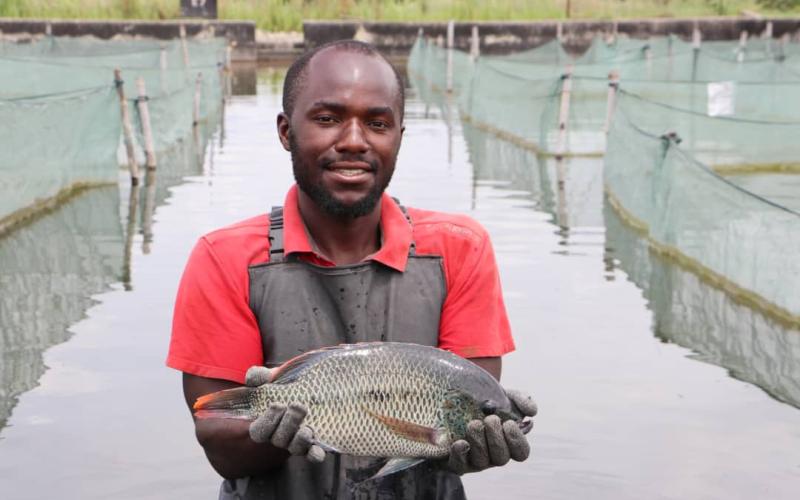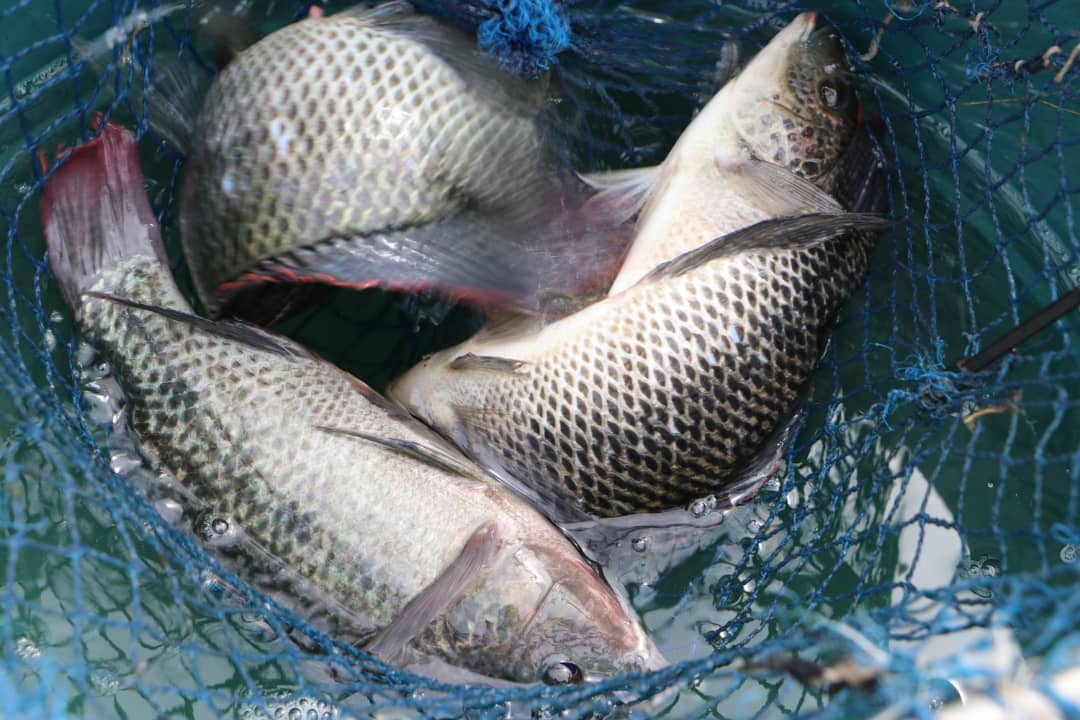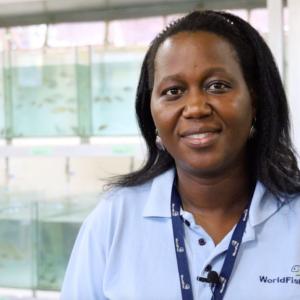
- Genetic Improvement Program (GIP) disease-free base population harvested.
- Improved fish growth from the GIP program will contribute to the production of a fish crop in a relatively shorter period.
- GIP will aid in addressing the high cost of production.
- The program stands to Contribute towards SDGs to zero hunger.
The need for selective breeding techniques has been driven by the increase in demand for aquaculture products especially now that the capture fisheries sector is struggling to meet the demand. According to the FAO Aquatic Biodiversity: underpinning aquatic food security report, a growing human population is expected to drive an increase in fish consumption of approximately 1.2 percent per annum over the next decade. Production of fish and fish products is estimated to reach over 200 million tonnes by 2030.
The Aquatic Food System sector in many African countries Zambia inclusive, is characterized by low production due to the low availability of quality seed, especially for indigenous species.
It is therefore crucial that aquatic resources are managed sustainably and safeguarded. This will not only allow for economic growth but also help in mitigating and adapting to the effects of climate change. It will further help achieve the Sustainable Development Goals in the continued fight for Zero hunger.
Improving Growth Traits
The Genetic Improvement Program in Zambia has developed a disease-free foundation broodstock for the three-spotted tilapia (Oreochromis andersonii) locally called Kafue bream upon which the selective breeding program will be anchored. Over 150 unique families have been produced from which a genetically diverse base population has been built for the program. This was generated from a genetically diverse base population, generation 0 (G0) produced from broodstock that was collected from natural river systems, where the fish naturally occur.
The GIP for the three-spotted tilapia has aimed at improving growth traits while monitoring survival for increased production and profitability of the local species.

|
Through the Ministry of Fisheries and Livestock, under the Zambia Aquaculture Enterprise Development Project (ZAEDP), WorldFish has provided technical project support and capacity building for staff in various GIP activities, at the National Aquaculture Research Development Center (NARDC) in Mwekera, Kitwe. The project has been implemented in partnership with the Department of Fisheries.
Ensuring a Sustainable National Breeding Program
Production of large numbers of individual families for the three-spotted tilapia is aimed at ensuring a sustainable national breeding program while minimizing the effects of cumulative inbreeding that could otherwise arise if unchecked from one generation to another. A genetically diverse stock from which fingerlings will be produced is key to providing quality fingerlings to farmers.
“The Genetic Improvement Program is an important step because it will help boost aquaculture in Zambia. It will aid in providing fry that are far better performing and will allow farmers the ability to grow fish to a larger size in a shorter period and therefore be able to provide for customers and begin to meet market demand for fish which is expected to increase in the next 10 -15 years,” says John Benzie, Principal Scientist at WorldFish.
Improved growth of fish from the GIP program will contribute to the production of a fish crop in a relatively shorter period, maximize inputs, and ensure the profitability of the indigenous tilapia in the aquaculture industry in Zambia. This will not only improve the livelihoods of the people, but also meet the growing demand for fish in the country, a resource that is depleting at a fast rate from the country’s natural water bodies.
Seed with high genetic diversity grows faster and has high survival, which in turn helps save on input costs like feed, water, and labor. Additionally, fish grown efficiently within a short period with fewer inputs ensures a small carbon footprint, an attribute that ensures resilience in the changing climate conditions.
Increasing Productivity and Profitability
With economic transformation being the over-arching framework of the Zambian government in bringing together interventions in the various sectors of the economy to create jobs and reduce poverty, the envisaged outcomes such as increased productivity and profitability from the GIP stand as key in contributing to the aquaculture sector and the country’s economy at large.
Minister of Fisheries and Livestock Makozo Chikote MP, on his familiarization tour to the project site, commended WorldFish for the achievements thus far which he indicated the government is committed to building on.
Under the broader ZAEDP project, WorldFish has worked with other partners like the Food and Agriculture Organization (FAO) who have also provided training to the hatchery operators on best management practices critical to managing improved seed and broodstock.
Breeding activities for this program are conducted at NARDC which is also considered the nucleus center for the GIP of the three-spotted tilapia. Currently, the research team is assessing this first generation as they continue to produce generation 2 (G2).

